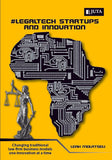
Essential Text on Local Government Law in Zambia, 1st Edition
Product Details:
| Author(s): | Chirwa, J |
| Page count: | 170 |
| ISBN: | 9781485136576 |
| Languages(s): | English, |
| Year Published: | 2020 |
| Categories: | Local and Provincial Government, Africa, Law, |
| Type: |
About this publication
Essential Text on Local Government Law in Zambia is an important book that dissects the concepts and themes surrounding local government in Zambia. The book is a must-have guide for all role-players and stakeholders in local government administration in Zambia. It will be of much use to councillors, local government administrators, public administrators, town clerks, human resources managers and students of law.
Essential Text on Local Government Law in Zambia covers the following topics:
- introduction to local government law
- the system of local government in Zambia
- acquisition of powers
- functions of local authority
- liability of local authorities
- breach of statutory duty
- central controls over local authorities
- judicial review of administrative action of local authorities
- local government finance
- local government elections
- councillor–officer relationships
- council meetings
- the committee system
- by-laws
- alternative dispute resolution
- employment, labour and industrial relations
- occupational health and safety
Content
CHAPTER 1: INTRODUCTION TO LOCAL GOVERNMENT LAW
1.1 Introduction
1.2 Nature and Scope of Local Government Law
1.3 Constitutional Basis for Local Government
1.4 Concept and Idea of Local Government
1.5 Sources of Local Government Law
1.6 Conclusion
CHAPTER 2: THE SYSTEM OF LOCAL GOVERNMENT IN ZAMBIA
2.1 Introduction
2.2 Organs of Government
2.3 Corporate Nature of Local Authorities
2.4 Establishment of Councils
2.5 Central-Local Relations
2.6 Conclusion
CHAPTER 3: ACQUISITION OF POWERS
3.1 Introduction
3.2 The Constitution
3.3 Direct Legislation
3.4 Adoptive Acts
3.5 Statutory Instruments, Regulations and Orders
3.6 Conclusion
CHAPTER 4: FUNCTIONS OF LOCAL AUTHORITIES
4.1 Introduction
4.2 Nature of Powers of Local Authorities
4.3 Functions of Local Authorities
4.4 Conclusion
CHAPTER 5: LIABILITY OF LOCAL AUTHORITIES
5.1 Introduction
5.2 Tortious Liability
5.3 Contractual Liability
5.4 Criminal Liability
5.5 Conclusion
CHAPTER 6: BREACH OF STATUTORY DUTY
6.1 Introduction
6.2 Maladministration
6.3 Misfeasance
6.4 Nonfeasance
6.5 Defence of Statutory Authority
6.6 Conclusion
CHAPTER 7: CENTRAL CONTROLS OVER LOCAL AUTHORITIES
7.1 Introduction
7.2 Executive Controls
7.3 Legislative Controls
7.4 Judicial Controls
7.5 Conclusion
CHAPTER 8: JUDICIAL REVIEW OF ADMINISTRATIVE ACTION OF LOCAL AUTHORITIES
8.1 Introduction
8.2 Nature and Scope of Judicial Review
8.3 Public Bodies and Judicial Review
8.4 Locus Standi in Judicial Review
8.5 Grounds for Judicial Review
8.6 Legitimate Expectation and the Future of Judicial Review
8.7 Remedies of Judicial Review
8.8 Conclusion
CHAPTER 9: LOCAL GOVERNMENT FINANCE
9.1 Introduction
9.2 Sources of Finance
9.3 Constituency Development Fund
9.4 Equalisation Fund
9.5 Audit
9.6 Conclusion
CHAPTER 10: LOCAL GOVERNMENT ELECTIONS
10.1 Introduction
10.2 Mayor and Council Chairperson
10.3 Deputy Mayor and Deputy Council Chairperson
10.4 Councillors
10.5 Election Petitions
10.6 Electoral Offences
10.7 Conclusion
CHAPTER 11: COUNCILLOR–OFFICER RELATIONSHIPS
11.1 Introduction
11.2 Master–Servant Relationship
11.3 Duties and Roles of Mayor and Council Chairperson
11.4 Duties and Roles of Councillors
11.5 Duties and Roles of the Town Clerk and Council Secretary
11.6 Conclusion
CHAPTER 12: COUNCIL MEETINGS
12.1 Introduction
12.2 Types of Meetings
12.4 Quorum
12.5 Voting
12.6 Attendance by Public
12.7 Minutes
12.8 Conclusion
CHAPTER 13: COMMITTEE SYSTEM
13.1 Introduction
13.2 Rationale for Committee System
13.3 Delagation of Powers to Committees
13.4 Types of Committees
13.5 Conclusion
CHAPTER 14: BY-LAWS
14.1 Introduction
14.2 By-Law Making Powers
14.3 Procedure for Making of By-Laws
14.4 Judicial Tests as to Validity of By-Laws
14.5 Penalties and Enforcement
14.6 Powers of Minister to Amend or Revoke By-Laws
14.7 Regulations
14.8 Standing Orders
14.9 Conclusion
CHAPTER 15: ALTERNATIVE DISPUTE RESOLUTION
15.1 Introduction
15.2 Nature and Scope
15.3 Advantages over Litigation
15.4 Types
15.5 Conclusion
CHAPTER 16: EMPLOYMENT, LABOUR AND INDUSTRIAL RELATIONS
16.1 Introduction
16.2 Trade Union Law
16.3 Discrimination and Hiv/Aids
16.4 Mental Health
16.5 Disability Rights
16.6 Occupational Health and Safety
16.7 Conclusion
BIBLIOGRAPHY
INDEX
We Also Recommend




